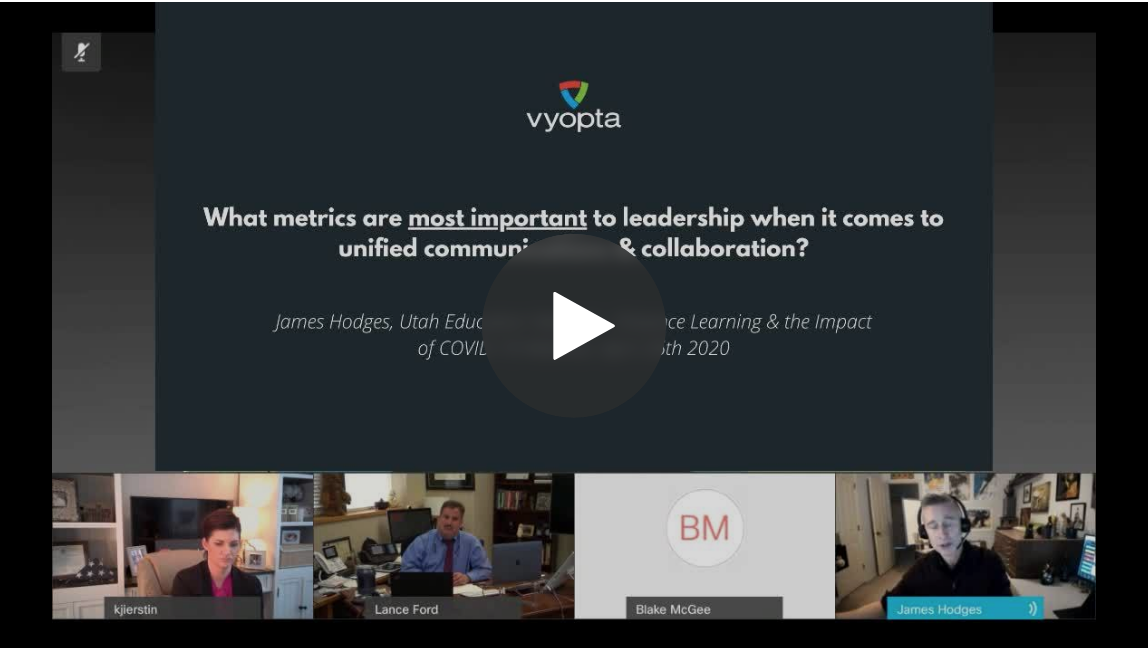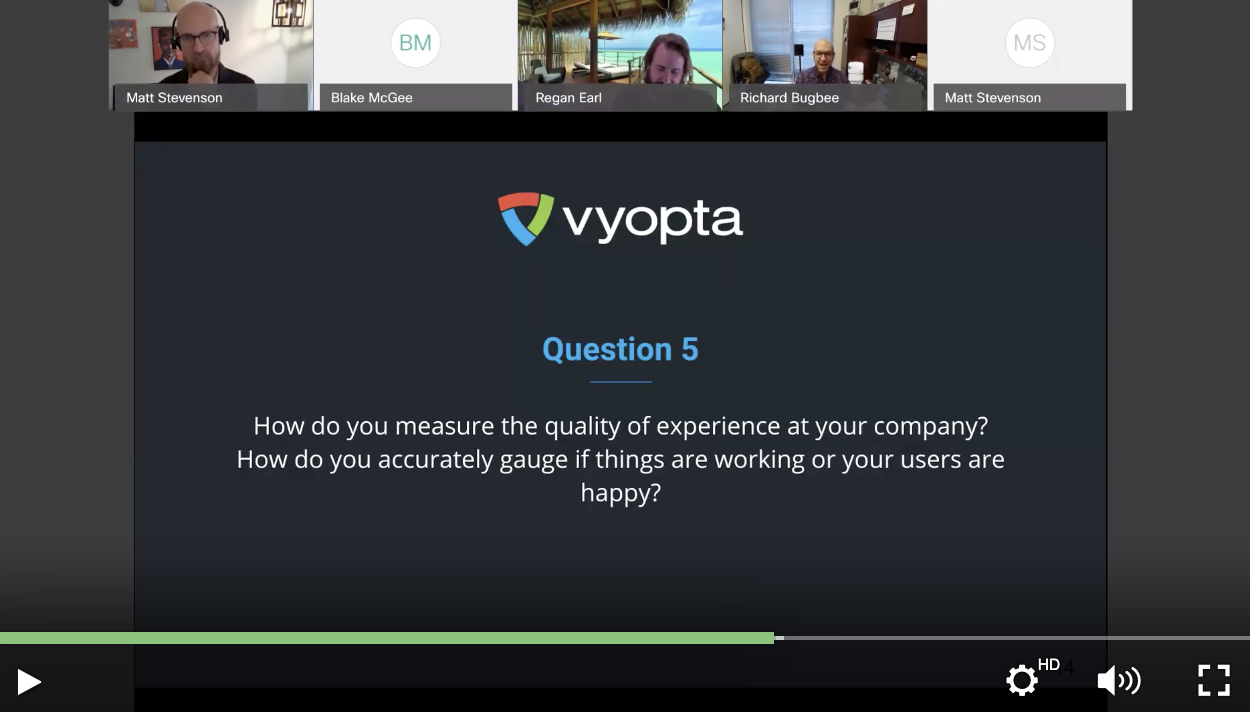Among the many uncertainties and question marks brought on by the COVID-19 pandemic, business leaders in most industries are in the process of rethinking their long-term plans for participating in conferences and conventions related to their field. Hundreds of large events have been canceled since the beginning of March and while we all wait to see how the economy responds to the pandemic’s long-term effects, many companies are turning to online webinars as a fallback for bringing industry colleagues together.
This is one more example of how online meetings and unified communications are filling in gaps in everyday interactions that have been created by the coronavirus and its effect on the workplace, education and health care. This is true even here at Vyopta, where attending and participating in trade shows has been an important part of the strategy for reaching executives with global companies needing enterprise communications services. The cancellation of spring trade shows has opened up webinars as an effective and growing option for convening peers in the communications field, with both advantages and disadvantages over the tried and true in-person trade show marketing playbook.
“People are being forced into webinars, and it’s opening the eyes of leaders at their companies and showing them they can get away with not sending people to so many seminars and events,” said Blake McGee, Vyopta’s Senior Demand Generation Manager. “By necessity leadership is being forced to recognize this technology can save them a ton of money. I do think events will take a hit. People will always need to do some kind of in-person meeting, but companies are starting to realize they don’t need to send 20 people to an event and now might only send two. They’ll still have some representation there but won’t send as many because they won’t need to.”
The Pros and Cons of Webinars
While we’re still in the early stages of the events/webinar tradeoff, McGee said there are already well-defined pros and cons.
Pros:
- Far higher return on investment
- Low fixed costs
- Easy and fast to organize
- Generates a highly targeted lead list
- No logistical limits to the number of attendees
Cons:
- No relationship building or face-to-face opportunities
- Limited time; roughly an hour at most
- Content can turn off attendees if it’s too sales-driven
- Tough to attract C-level executives and decision makers as attendees
A pair of recent Vyopta webinars focused on healthcare and distance learning communications featured a panel of leaders in those industries discussing relevant topics and challenges that resonated and created valuable insights for those logging on. McGee said the panel format is a clear winner for online events because the discussions between peers naturally draws viewers in and can lead to engaging participation in the dedicated chat room, presenting a perfect opportunity for hosts to monitor which participants might make the best potential customers. Data analytics from Vyopta measuring stats like attendance length and chat participation are useful for companies to gauge their overall performance on a webinar and can help inform improvements in content and structure to make them more effective for sales and marketing teams.
“Where we see success is producing the right content doing things like having customers testifying rather than being sales-y and pitching,” McGee said. “Letting the customer talk openly about their challenges is important because it produces the right lead. Don’t try to sell. If we were there just to sell people on our product it would be crickets in the chat window. They’re there because they want to listen to people like them.”
Some Tips for Great Webinars
Already a leader in the corporate events space, Austin-based Red Velvet Events has turned its attention heavily toward serving clients looking to take advantage of online events in the wake of COVID-19 restrictions on gatherings.
In a recent blog post the company provided some crucial do’s and don’ts for holding webinars:
- Make sure the event time is convenient for attendees in your desired demographics.
- Establish KPIs beforehand so it’s easier to judge the effectiveness of the event afterward.
- Allow enough time to get your panel presenters ready, and address all technical issues ahead of time.
- Give your technical team the proper advance notice of the event so they can prepare the IT infrastructure to handle a large number of attendees.
- Create needed in-event polls, surveys or other participatory content ahead of time.
- Make sure your registration platform integrates with the event platform, and make the check-in/admission process flows smoothly.
As part of our response to the COVID-19 pandemic, Vyopta is currently offering a free trial to help IT teams support massive expansion in remote work.
Chad Swiatecki is a business writer and journalist whose work has appeared in Rolling Stone, Billboard, New York Daily News, Austin Business Journal, Austin American-Statesman and many other print and online publications. He lives in Austin, Texas and is a graduate of Michigan State University. Find him online on LinkedIn.








